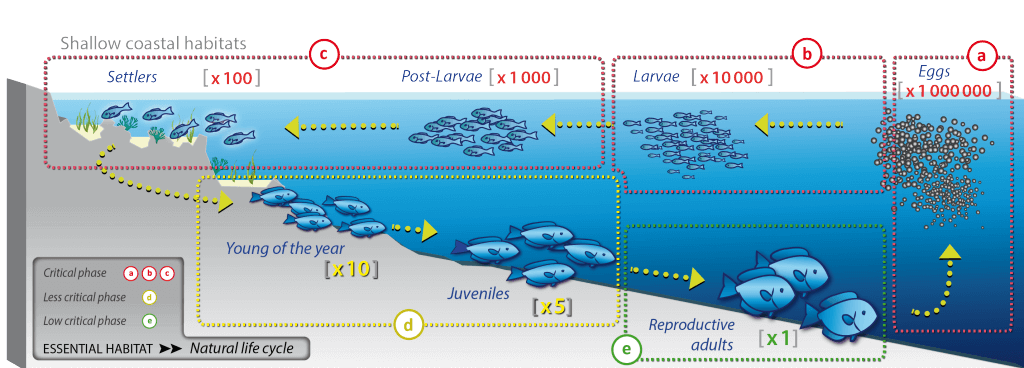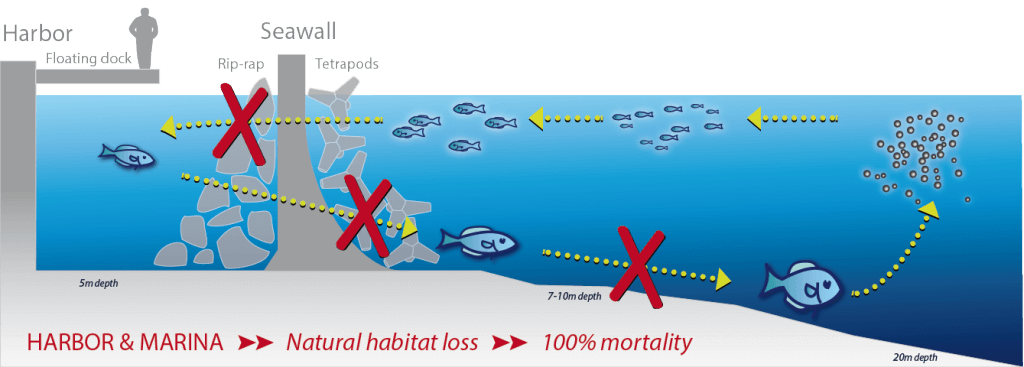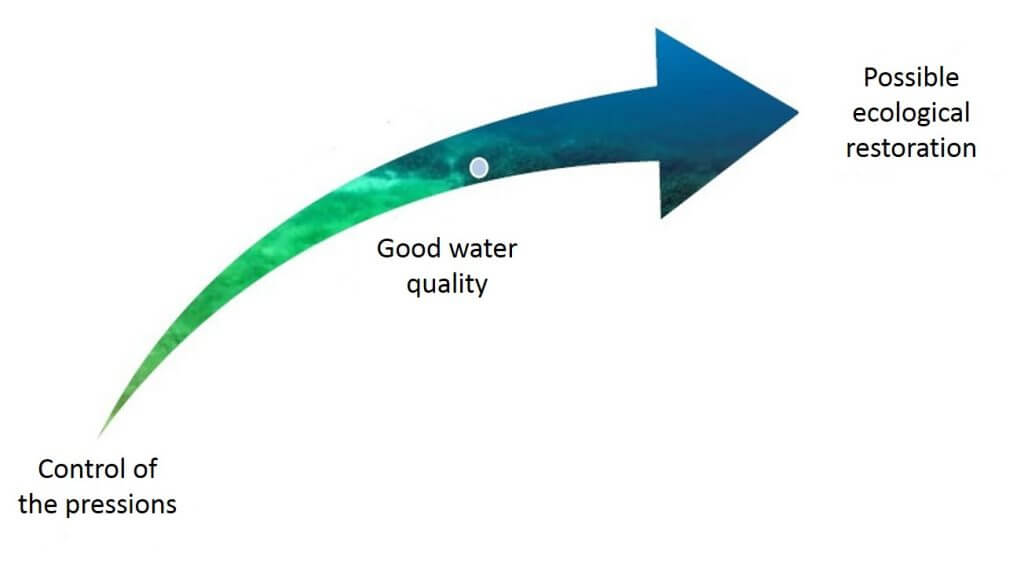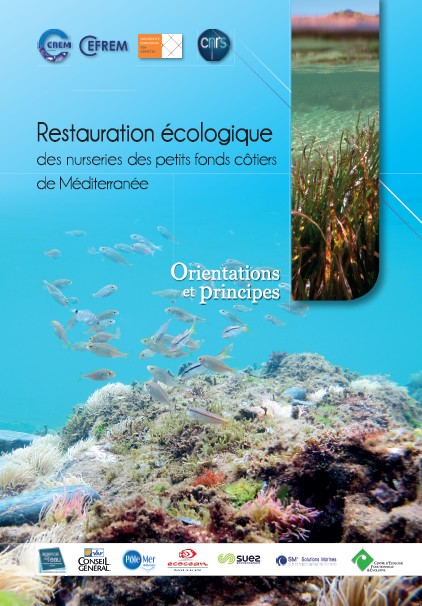Colonization of shallow coastal areas : a critical lifestage

Importance of mortality rates at different stages of development (red: critical phase, yellow: moderately critical, green: uncritical) © Ecocean
The diagram above shows how one million eggs are needed to produce one mature adult. This is due to a very high mortality rate during the fish lifecycle, especially during the early stages. The colonization phase of shallow coastal areas (post-larvae and recruit stages) is the second most critical phase after the larval stage, with 90% mortality. This high mortality is due to predation and the competition for food and habitat, hence the crucial role of nursery areas.
Given the essential role of nurseries in the lifecycle of fish, their destruction should be avoided at all costs, or at least minimized during project of coastal development. For the remaining impact that could not be avoided nor minimized, mitigation measures may then be considered.

YESTERDAY In a natural environment, coastal fish depend on specific habitats for each stage of growth. Rocky and sandy bottoms on shallow shorelines are essentials for young fish seeking shelter and food. © Ecocean

TODAY Coastal development impacts the survival of young fish at key life stages by removing crucial habitat, which leads to a decrease in adult population. © Ecocean
Coastal ecology engineering: a fast-growing sector

Diagram from the RMC Water Agency guide: “Restauration des eaux côtières de Méditerranée – Etat des Lieux et perspectives”
Ecological engineering in the marine environment is a recent field. It comes as a complement to the policies aiming at preventing and fighting pollution. In recent years, there has been an important effort of research, development and innovation. Yet, it must be remembered that a good water quality must be achieved prior to any action of ecological restoration in the marine environment, and elimination of the pressures responsible for the degradation of the water quality remains the top priority.

Guide “Ecological Restoration of Fish Nurseries in Shallow Coastal Areas of the Mediterranean Basin: Guidelines and Principles” (2015)
Thanks to European and national regulatory requirements, efforts over the past 20 years in the fight against domestic and industrial pollution have helped significantly improve the water quality of the French Mediterranean coast. Ecological engineering will provide tomorrow powerful tools to restore ecosystems of the coastal marine environment.
In 2015, a guide entitled “Ecological Restoration of Fish Nurseries in Shallow Coastal Areas of the Mediterranean Basin: Guidelines and Principles” was published. This book presents an updated state-of-the-art of technical and scientific knowledge, recommendations for the implementation of operational solutions and finally the presentation of ongoing projects.

